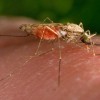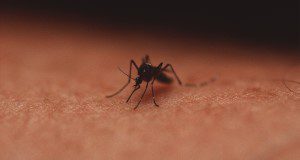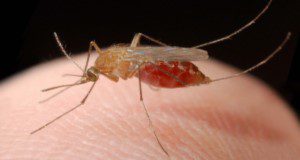The Prevent & Protect publication series focuses on the creation of different material formats to resonate with various audiences and ways to maximize their efficacy in communicating risk to the public about mosquito control. The overview of the Prevent & Protect project, developed by the UF/IFAS Center for Public Issues Education in Agriculture and Natural Resources (PIE Center), can be found in EDIS publication AEC694/WC357, Public Perceptions of Mosquitoes and Mosquito Control. This new 3-page document describes the importance of understanding and adapting to public perceptions of information sources and how scientists can adapt their research findings based upon the needs of professionals in the field to create usable outreach materials. Written by Shelli Rampold, Ricky Telg, Alena Poulin, Sandra Anderson, Angela B. Lindsey, Ashley McLeod-Morin, and Phillip Stokes, and published by the UF/IFAS Department of Agricultural Education and Communication.
https://edis.ifas.ufl.edu/wc358
Tag: Mosquitoes
Public Perceptions of Mosquitoes and Mosquito Control
The Prevent & Protect publication series focuses on the creation of different material formats to resonate with various audiences and ways to maximize efficacy in communicating about mosquito-related risks and mosquito control topics to the public. This new 3-page publication of the UF/IFAS Department of Agricultural Education and Communication provides a background of public opinion on various aspects of mosquito control covered in the Prevent & Protect campaign. Written by Shelli Rampold, Ricky Telg, Alena Poulin, Sandra Anderson, Angela B. Lindsey, Ashley McLeod-Morin, and Phillip Stokes.
https://edis.ifas.ufl.edu/wc357
African malaria mosquito Anopheles gambiae Giles (Insecta: Diptera: Culicidae)
 Anopheles gambiae Giles is commonly called the African malaria mosquito because it is the most efficient vector of human malaria in the Afrotropical Region. They are considered to be one of the world’s most important human malaria vectors because of their susceptibility to the Plasmodium parasite, their preference for humans as a host, and their indoor-feeding behavior. Due to their short development time and their preference for developmental habitats near human dwellings, Anopheles gambiae are considered effective vectors of human malaria, as well as lymphatic filariasis (elephantiasis). This 6-page fact sheet was written by Sabrina A. White and Phillip E. Kaufman, and published by the UF Department of Entomology and Nematology, September 2014.
Anopheles gambiae Giles is commonly called the African malaria mosquito because it is the most efficient vector of human malaria in the Afrotropical Region. They are considered to be one of the world’s most important human malaria vectors because of their susceptibility to the Plasmodium parasite, their preference for humans as a host, and their indoor-feeding behavior. Due to their short development time and their preference for developmental habitats near human dwellings, Anopheles gambiae are considered effective vectors of human malaria, as well as lymphatic filariasis (elephantiasis). This 6-page fact sheet was written by Sabrina A. White and Phillip E. Kaufman, and published by the UF Department of Entomology and Nematology, September 2014.
http://edis.ifas.ufl.edu/in1048
A mosquito Psorophora ciliata (Fabricius) (Insecta: Diptera: Culicidae) (EENY540/IN967)
 Psorophora ciliata (Fabricius) is a large mosquito that has developed an outsized reputation because of its relatively intimidating heft and persistent biting behavior, including anecdotal historical accounts of its legendary aggressiveness and ‘frightening appearance’. This 6-page fact sheet was written by Ephraim V. Ragasa and Phillip E. Kaufman, and published by the UF Department of Entomology and Nematology, October 2012.
Psorophora ciliata (Fabricius) is a large mosquito that has developed an outsized reputation because of its relatively intimidating heft and persistent biting behavior, including anecdotal historical accounts of its legendary aggressiveness and ‘frightening appearance’. This 6-page fact sheet was written by Ephraim V. Ragasa and Phillip E. Kaufman, and published by the UF Department of Entomology and Nematology, October 2012.
http://edis.ifas.ufl.edu/in967
Mosquito Control Impoundments (ENY648S/IN192)
 A mosquito control impoundment is a salt marsh or mangrove forest with an earthen dike around the perimeter that allows the area to be artificially flooded during the mosquito breeding season. Since the seventies, research has shown that impounding can have severe environmental impacts on the marshes and the adjoining estuary. So, over 12,600 hectares of the original 16,185 of impoundments have been rehabilitated in some fashion. This 6-page fact sheet was written by Jorge R. Rey and C. Roxanne Connelly, and published by the UF Department of Entomology and Nematology, June 2012.
A mosquito control impoundment is a salt marsh or mangrove forest with an earthen dike around the perimeter that allows the area to be artificially flooded during the mosquito breeding season. Since the seventies, research has shown that impounding can have severe environmental impacts on the marshes and the adjoining estuary. So, over 12,600 hectares of the original 16,185 of impoundments have been rehabilitated in some fashion. This 6-page fact sheet was written by Jorge R. Rey and C. Roxanne Connelly, and published by the UF Department of Entomology and Nematology, June 2012.
http://edis.ifas.ufl.edu/in192
A Mosquito Culex (Melanoconion) pilosus (Dyar and Knab) (Insecta: Diptera: Culicidae) (EENY521/IN930)
 This small, dark mosquito tends to feed on reptiles and amphibians. It is found in the southeastern United States and many countries in Central America and South America. This 3-page fact sheet was written by Diana Vork and C. Roxanne Connelly, and published by the UF Department of Entomology and Nematology, April 2012.
This small, dark mosquito tends to feed on reptiles and amphibians. It is found in the southeastern United States and many countries in Central America and South America. This 3-page fact sheet was written by Diana Vork and C. Roxanne Connelly, and published by the UF Department of Entomology and Nematology, April 2012.
http://edis.ifas.ufl.edu/in930
El Mosquito Culex Iolambdis (ENY727S/IN901)
Culex (melanoconion) iolambdis es un mosquito pequeño de color marrón oscuro que existe en sitios tropicales y subtropicales. En los Estados Unidos, solo se encuentra en el sur de Florida. Se conoce poco sobre la biología y comportamiento de este mosquito. El subgenéro Melanoconion se distingue por el pequeño tamaño de sus especies y por dificultad en diferenciar las diferentes especies. This 4-page fact sheet was written by Jorge R. Rey, Erik M. Blosser, Stephanie K. Larrick and C. Roxanne Connelly, and published by the UF Department of Entomology and Nematology, September 2011.
http://edis.ifas.ufl.edu/in901
The Mosquito (ENY727/IN652)

It’s the height of mosquito season, are they getting under your skin? Mosquitoes are some of the most versatile organisms on earth. They can reproduce in virtually any natural or man-made deposit of water, and have been found in mines deep below the surface, in mountain peaks, in highly polluted water bodies, in snow pools, and even in crab holes. They occur throughout the globe and can survive in most of earth’s climates. Although they can be annoying and some are serious health threats, they can play an important role in natural communities, particularly as filter feeders in aquatic communities, and as a food source in both aquatic and terrestrial food chains. Learn more in this 7-page fact sheet by Jorge R. Rey, published by the UF/IFAS Department of Entomology and Nematology, June 2010.
http://edis.ifas.ufl.edu/in652
EENY481/IN870 a mosquito Culex (Melanoconion) iolambdis Dyar (Insecta: Diptera: Culicidae)
EENY481, a 5-page illustrated fact sheet by Stephanie K. Larrick, Erik M. Blosser, and C. Roxanne Connelly, is part of the Featured Creatures collection. It describes this small, dark brown mosquito that exists in the tropics and subtropics and about which little is known — distribution, description, biology, medical importance, and management. Includes references. Published by the UF Department of Entomology and Nematology, August 2010.
http://edis.ifas.ufl.edu/in870
ENY860S/IN852 Los Mosquitos de Recipientes de Florida
ENY860S, a 5-page illustrated fact sheet by Jorge R. Rey and Roxanne R. Connelly, is the Spanish language version of ENY860/IN851 Florida Container Mosquitoes. It describes the types of container mosquitoes found in Florida and recommendations for control. Includes references. Published by the UF Department of Entomology and Nematology, August 2010.
http://edis.ifas.ufl.edu/in852
ENY860/IN851 Florida Container Mosquitoes
ENY860, a 5-page illustrated fact sheet by Jorge R. Rey and Roxanne R. Connelly, describes common characteristics of these species of mosquito that develop in water-holding containers, both natural and artificial, major species in Florida, and methods of control. Includes references. Published by the UF Department of Entomology and Nematology, June 2010.
http://edis.ifas.ufl.edu/in851
EENY457/IN837 Southern House Mosquito Culex quinquefasciatus Say
EENY457, a 6-page illustrated fact sheet by Stephanie Larrick and Roxanne Connelly, is part of the Featured Creatures collection. It describes this medium-sized brown mosquito that exists throughout the tropics and the lower latitudes of temperate regions and is a vector of many pathogens, several of which affect humans — synonymy, distribution, description, life cycle, medical importance, and management. Includes references. Published by the UF Department of Entomology and Nematology, November 2009.
http://edis.ifas.ufl.edu/IN837
ENY855/IN811 The Female Mosquito’s Quest for Blood: Implications for Disease Cycles
ENY855, a 4-page illustrated fact sheet by Stephanie L. Richards, Sheri L. Anderson, and Chelsea T. Smartt, tells the story of the female mosquito’s quest for blood and how it may affect our lives. It tells why only female mosquitos feed on blood, what makes a blood source suitable, why some people are more attractive than others, and why host preference is important for understanding endemic and emerging arthropod-borne disease cycle. Published by the UF Department of Entomology and Nematology, October 2009.
http://edis.ifas.ufl.edu/IN811
EENY434/IN792 Yellow fever mosquito Aedes aegypti (Linnaeus) (Insecta: Diptera: Culicidae)
EENY-434, an 8-page illustrated fact sheet by Catherine Zettel and Phillip Kaufman, is part of the Featured Creatures collection. It describes this container-inhabiting mosquito that is the primary vector of yellow fever — its synonymy, distribution, life cycle, medical importance, and management. Includes selected references. Published by the UF Department of Entomology and Nematology, February 2009.
http://edis.ifas.ufl.edu/IN792
EENY491/IN791 Common malaria Mosquito Anopheles quadrimaculatus Say (Insecta: Diptera: Culicidea)
EENY-491, a 6-page illustrated fact sheet by Leslie M. Rios and C. Roxanne Connelly, describes this historically most important vector of malaria in the eastern United States — synonymy, distribution, description, life cycle, medical significance, surveillance and management. Includes selected references. Published by the UF Department of Entomology and Nematology, February 2009.
http://edis.ifas.ufl.edu/IN791

